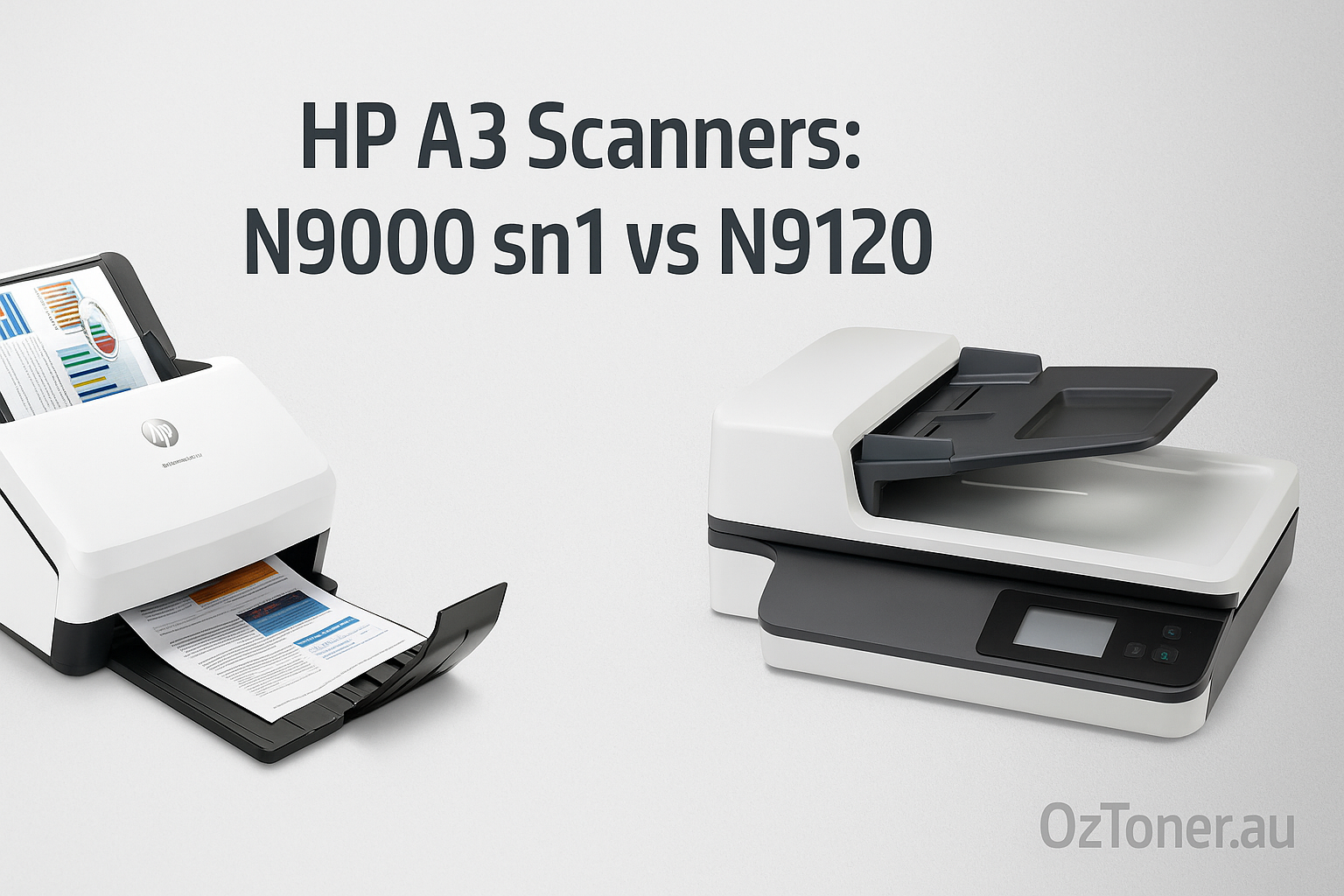HP A3 Document Scanner Comparison: ScanJet N9000 sn1 vs ScanJet N9120
Choosing the right A3 document scanner is essential for businesses handling large or complex documents. The HP ScanJet Enterprise Flow N9000 sn1 and the HP ScanJet N9120 are two of HP’s top options, but they are designed for different scanning needs. Here’s how they compare.
The HP ScanJet N9120 is a flatbed scanner, while the N9000 sn1 is a high-volume sheetfed scanner, offering distinct advantages for different scanning needs. The N9120 excels at high-quality, slow scanning of a wide variety of media including 3D objects, whereas the N9000 sn1 is built for high-speed, large batch scanning of standard documents with features like a 100-sheet automatic document feeder (ADF) and Ethernet connectivity for enterprise environments.
Scanner Type and Design
- N9000 sn1: Sheetfed scanner only. It does not include a flatbed, but uses its built-in automatic document feeder (ADF) for all scanning tasks.
- N9120: Flatbed A3 scanner with ADF. Ideal for scanning bound items (books, magazines) or fragile documents that cannot pass through a sheetfed mechanism.
Sheet-fed scanners
Ideal for A4-size paper and mixed flat media of various sizes, including brochures, receipts, business cards, and laminated ID cards (Driving licences, Credit Cards etc.).
Flatbed scanners
HP flatbed scanners provide the flexibility to scan documents with the automatic document feeder, as well as photos, books, and bulky items using the flatbed.
- Type: Flatbed scanner
- Key Feature: High-quality scanning of various media types.
- Ideal For: Scanning delicate or 3D objects, books, or when the highest image quality is paramount over speed.
- Limitations: Significantly slower scanning process compared to sheetfed scanners.
-
Type:Sheetfed scanner
-
Key Features:
- ADF: 100-sheet automatic document feeder for efficient large-volume scanning.
-
Connectivity: Ethernet port for network connectivity in an enterprise environment.
-
Limitations:Ideal For:Businesses needing to digitize large stacks of documents quickly and efficiently.Not suitable for scanning 3D objects or media with unique formats like carrier sheets.
Performance and Speed
- N9000 sn1: Up to 80 ppm / 160 ipm, duty cycle up to 30,000 pages per day.
- N9120: Up to 50 ppm / 100 ipm, duty cycle about 12,000 pages per day.
The N9000 sn1 is significantly faster, making it ideal for high-volume offices.
Document Handling
- N9000 sn1: 100-sheet sheetfed input, supports long-page scanning up to 230 inches.
- N9120: 200-sheet ADF plus full flatbed for A3 originals, bound books, and delicate media.
Connectivity and Ease of Use
- N9000 sn1: USB 3.0, Ethernet, and a 4.3-inch touchscreen interface.
- N9120: USB 2.0 connectivity, more traditional button interface.
Special Features
- N9000 sn1: HP EveryPage, one-pass duplex, designed purely for speed and throughput.
- N9120: Flatbed scanning for books/maps, OCR software, and enhanced image correction.
Which One Should You Choose?
If your workflow is high-volume, loose-sheet scanning, the N9000 sn1 is the better choice. If you frequently scan bound or fragile items, the N9120’s flatbed plus ADF is more versatile, though slower.
Conclusion
The N9000 sn1 is a fast, modern workhorse built for throughput, while the N9120 offers flexibility for different media types. Your choice depends on whether speed or versatility matters more to your business.



